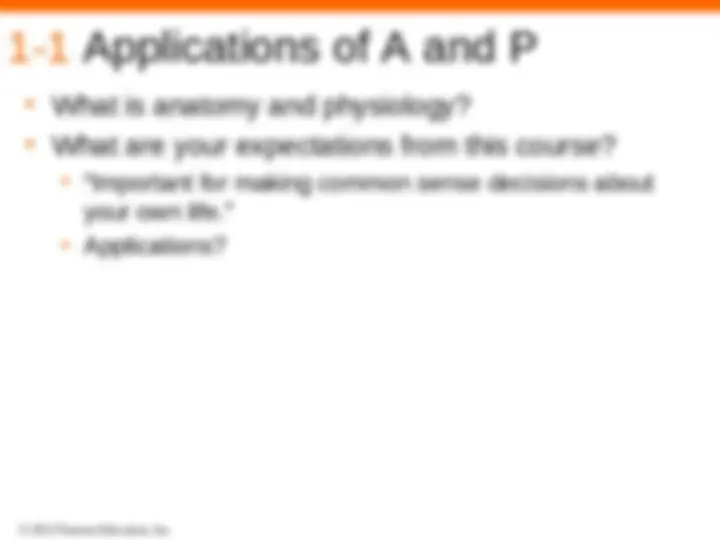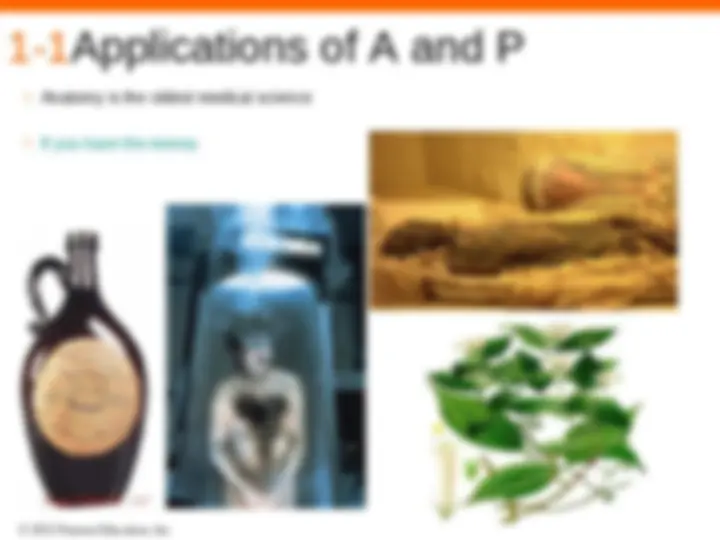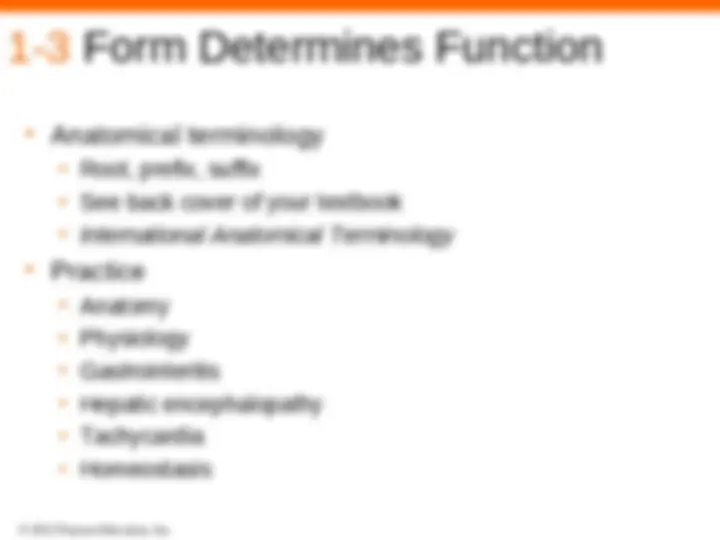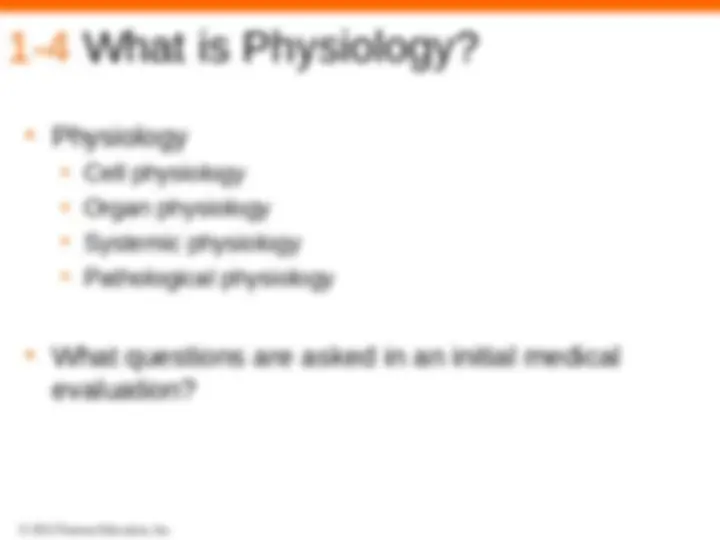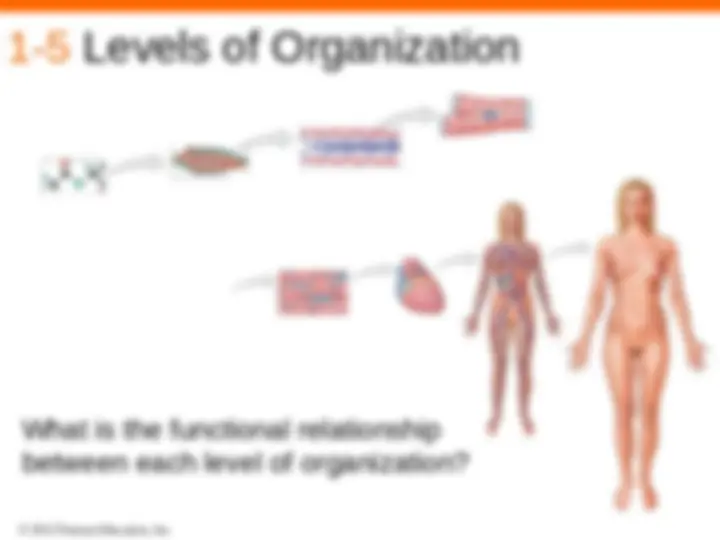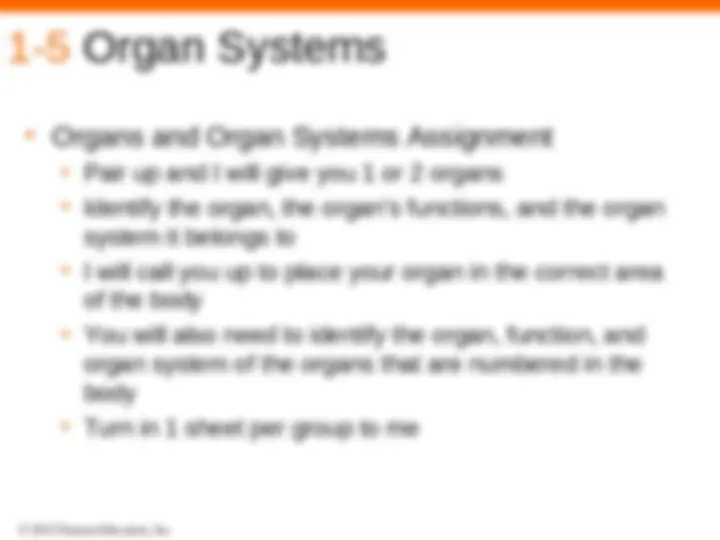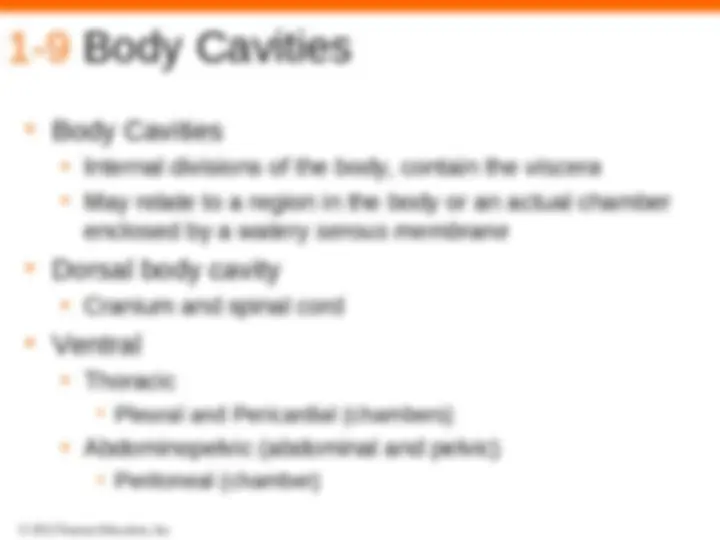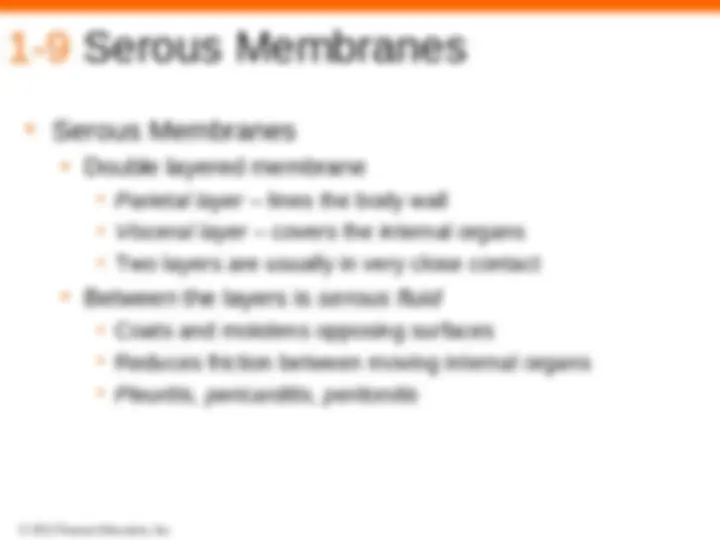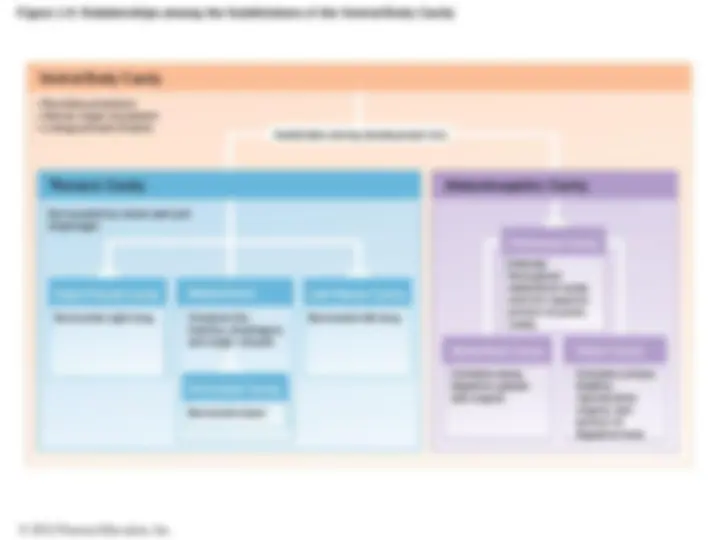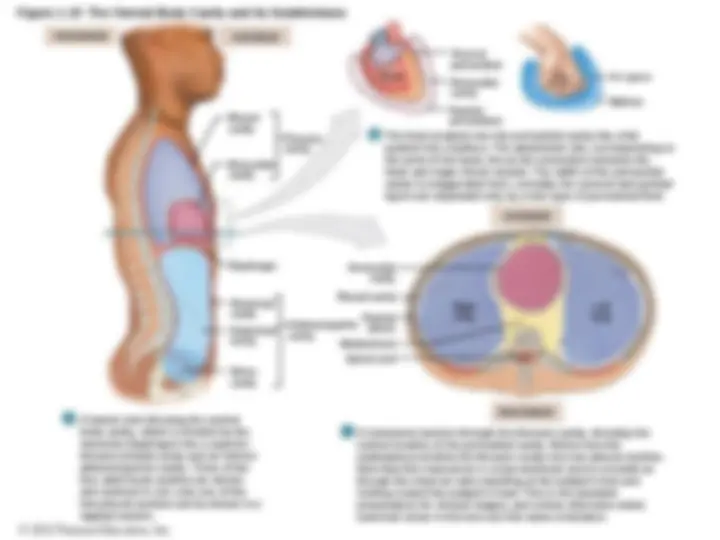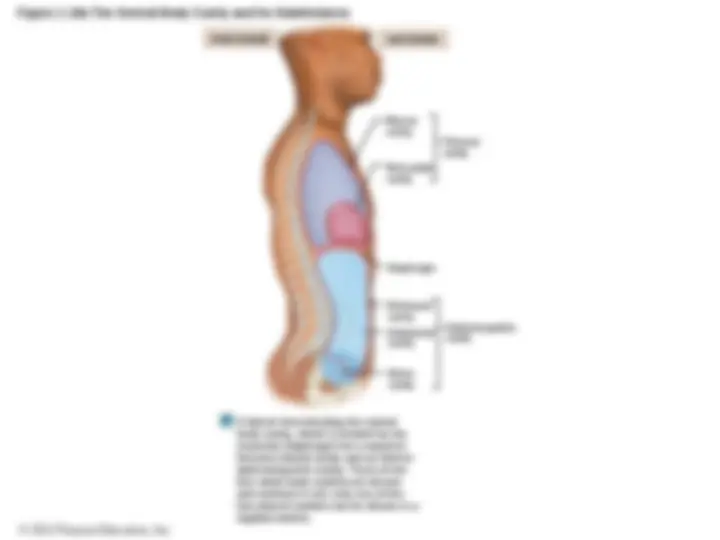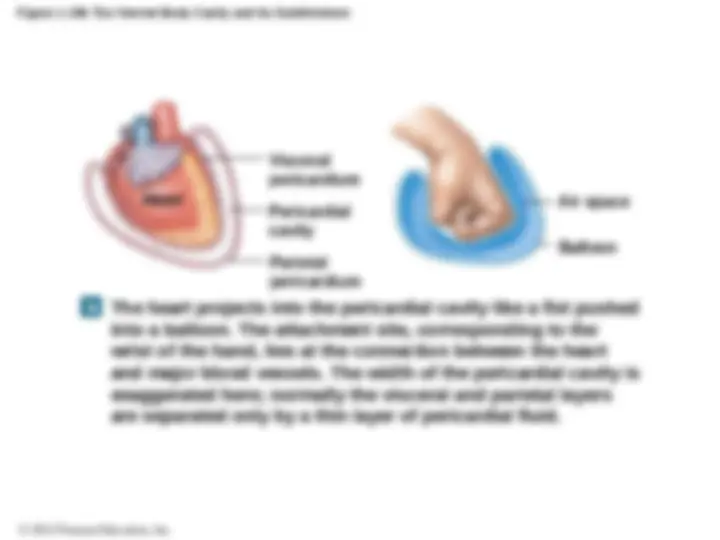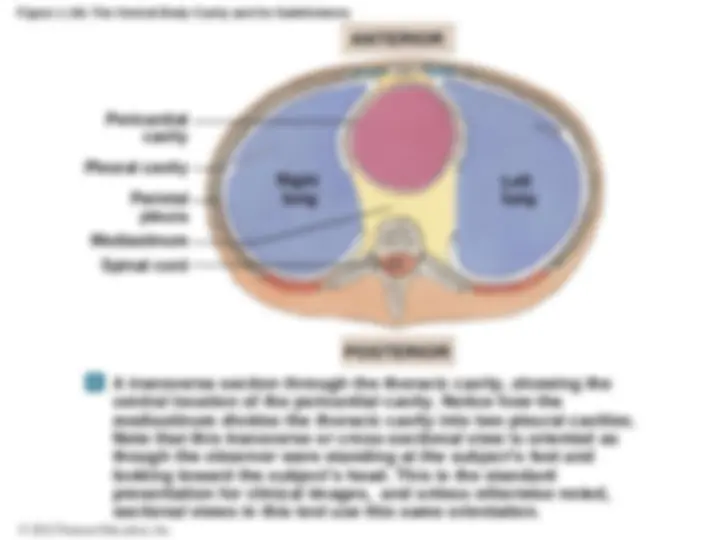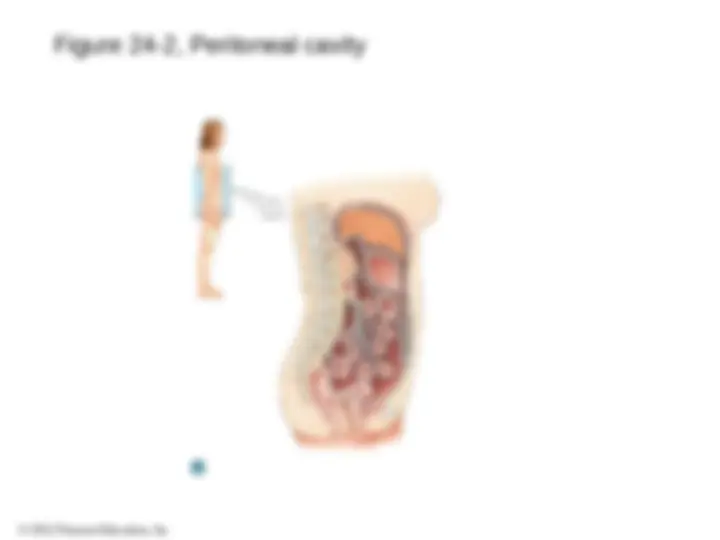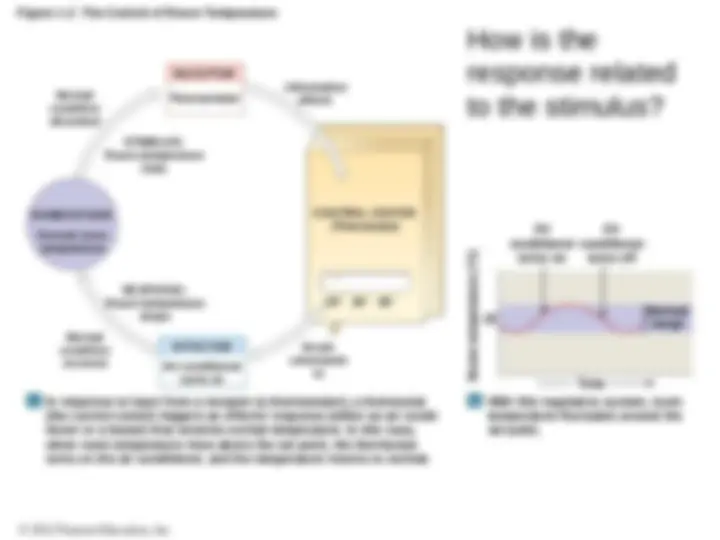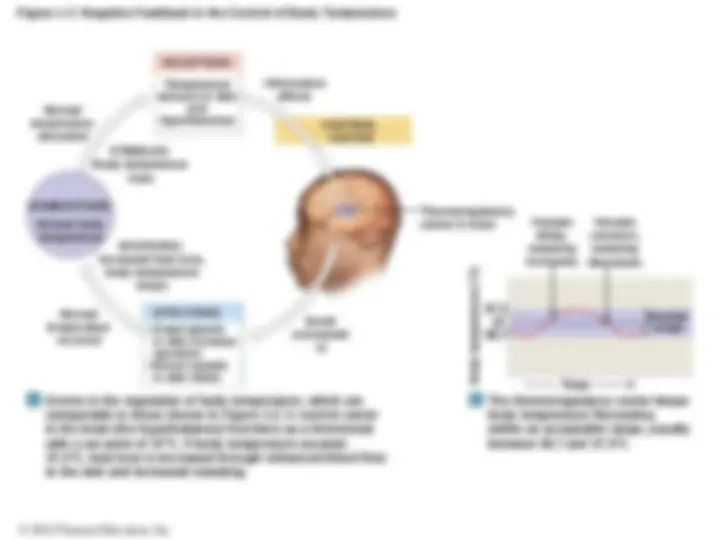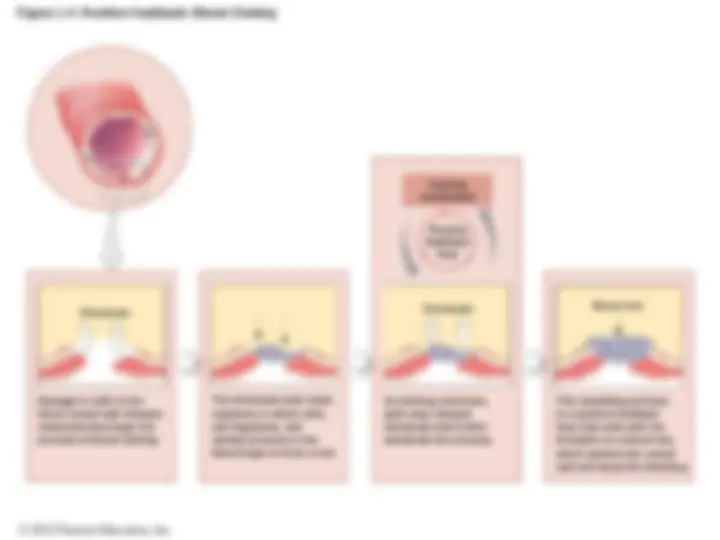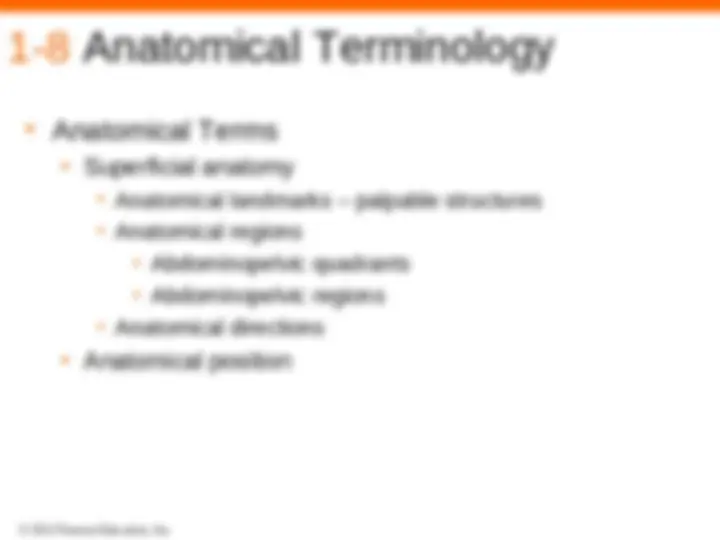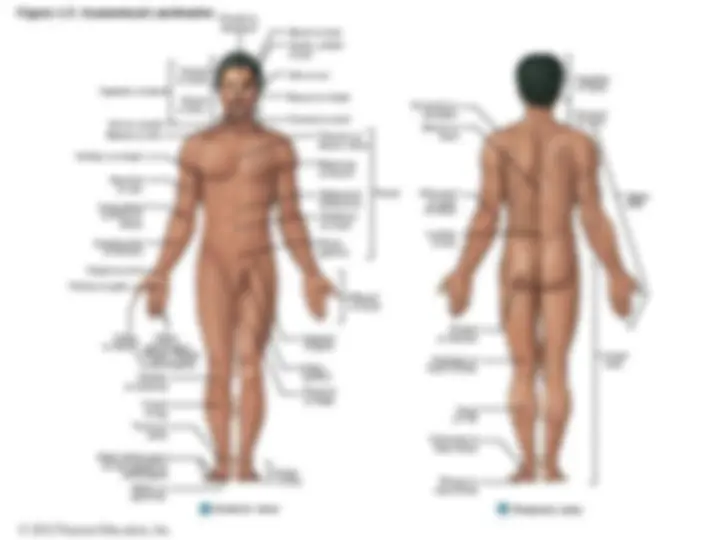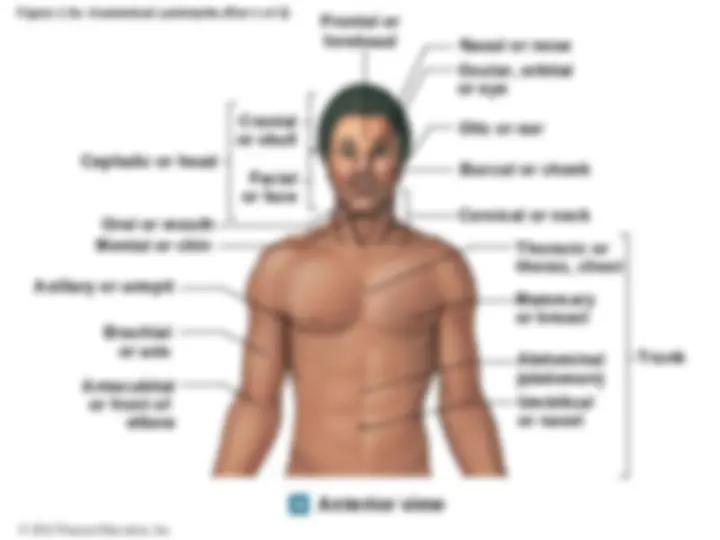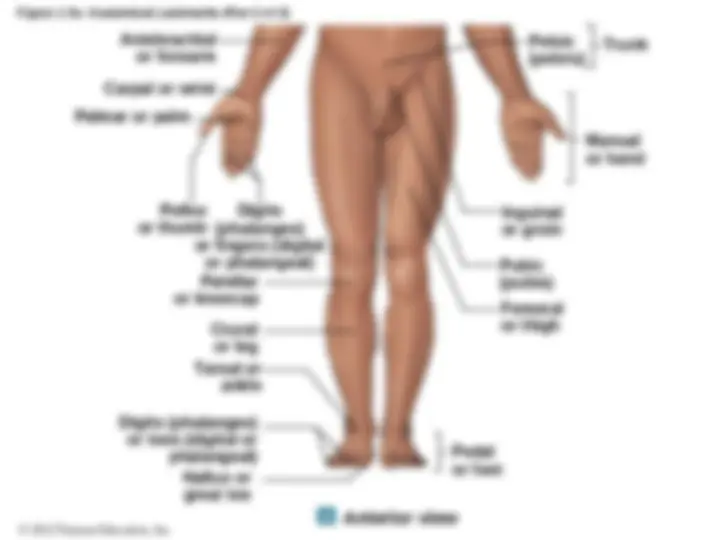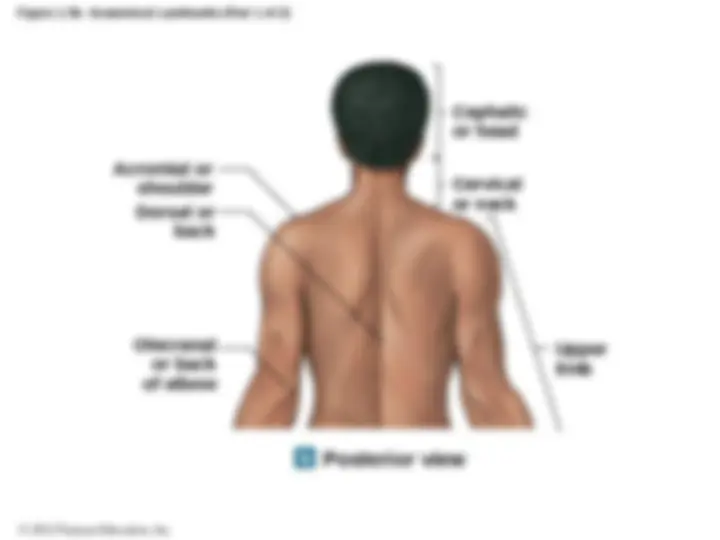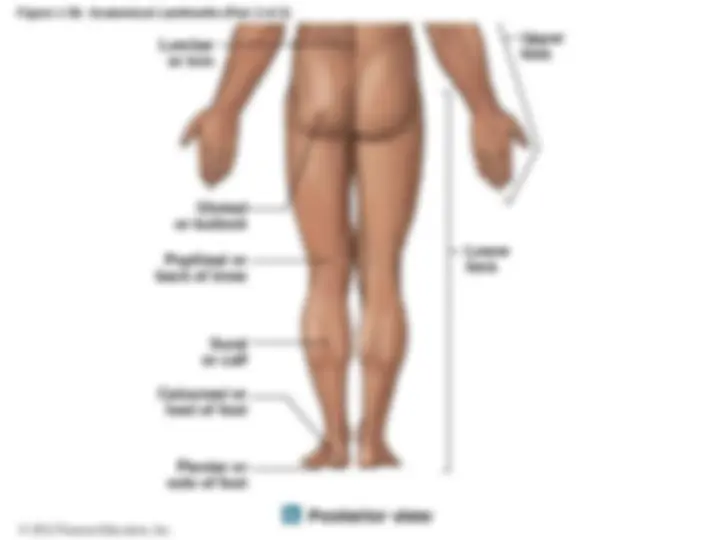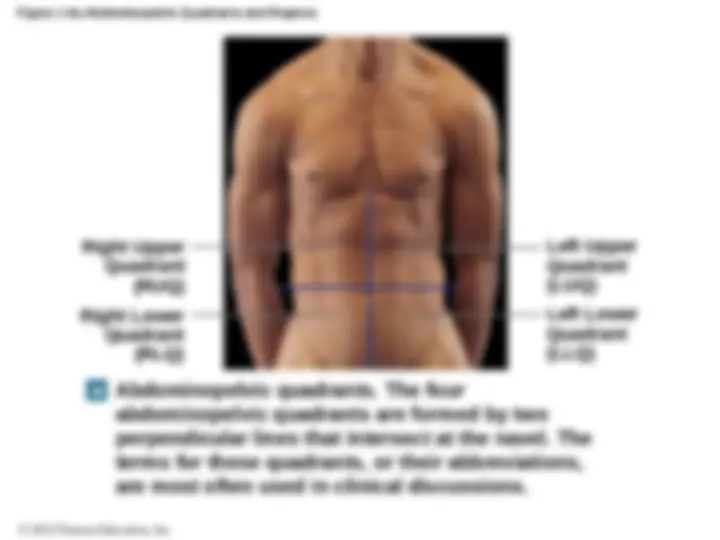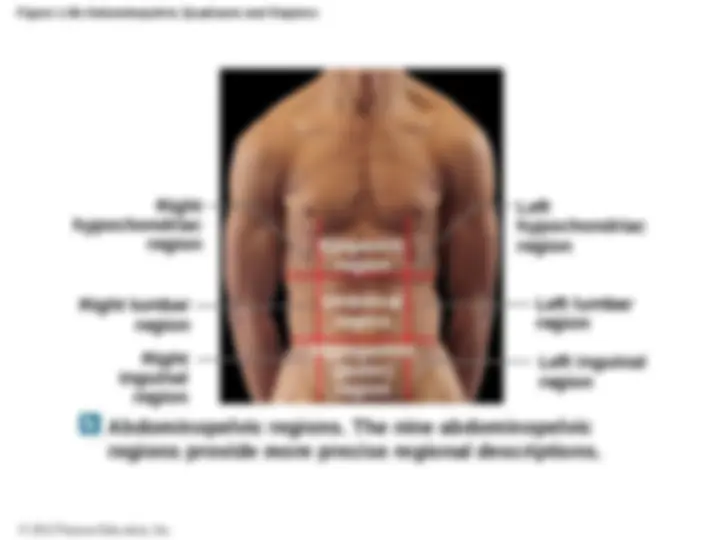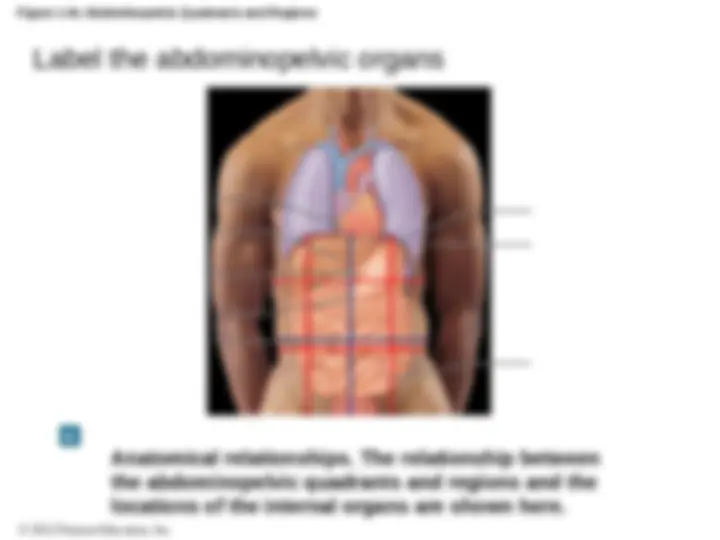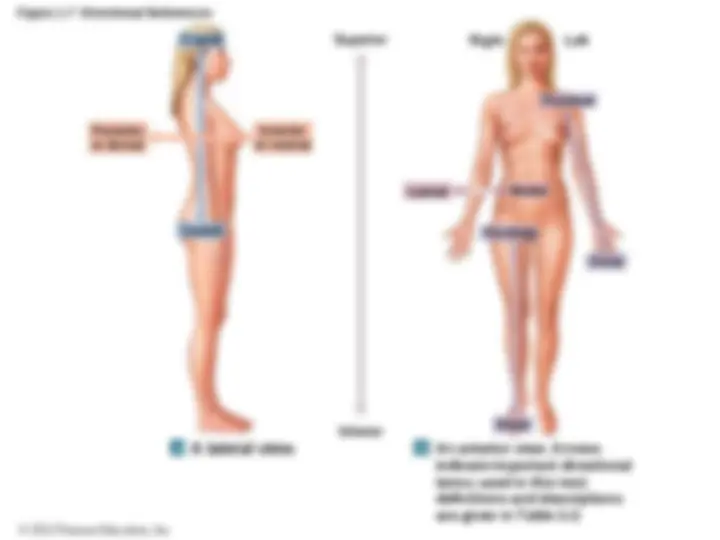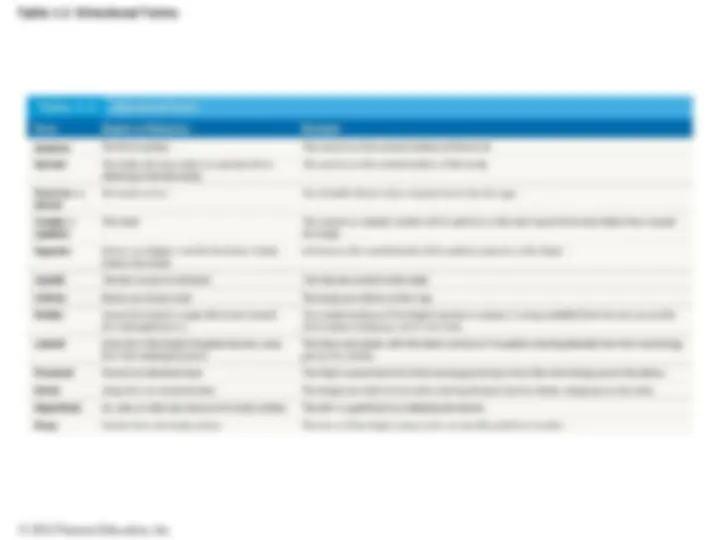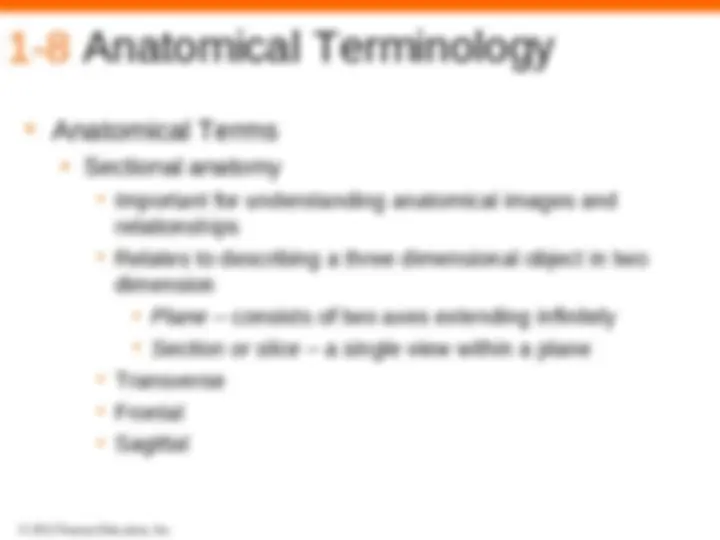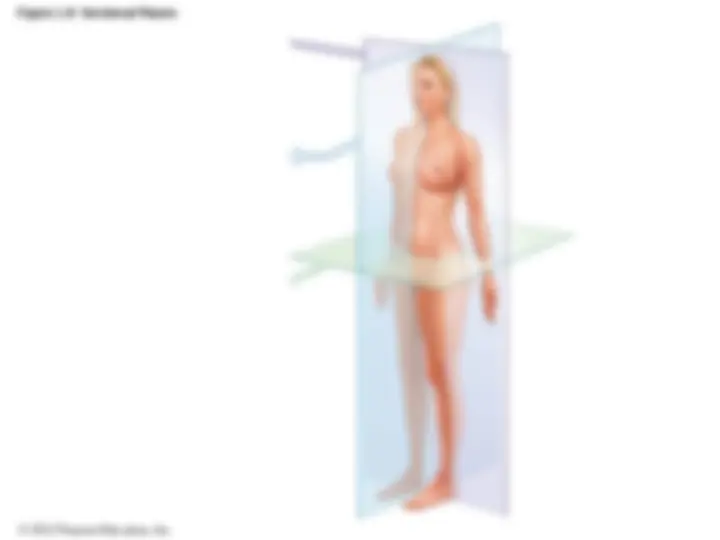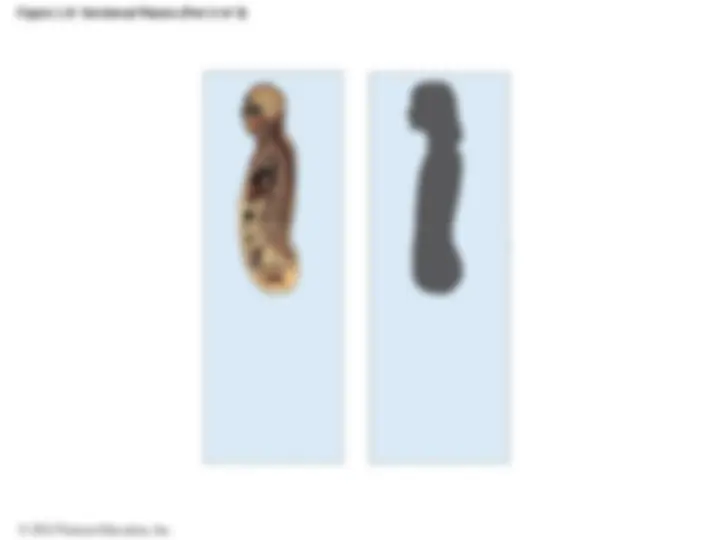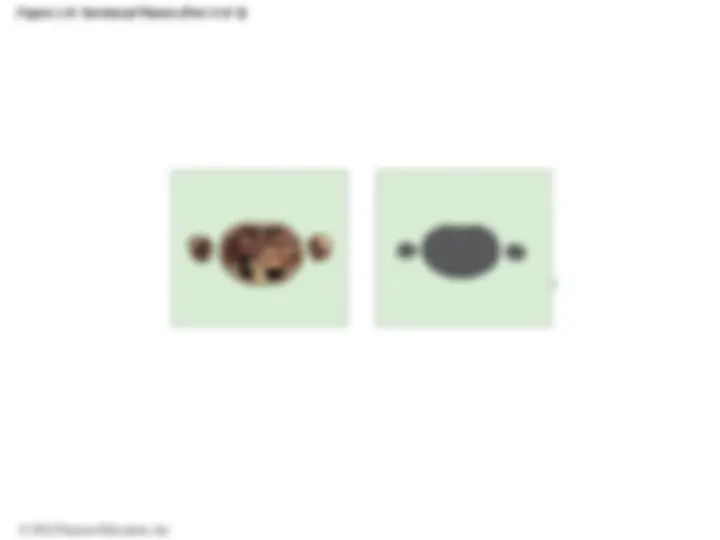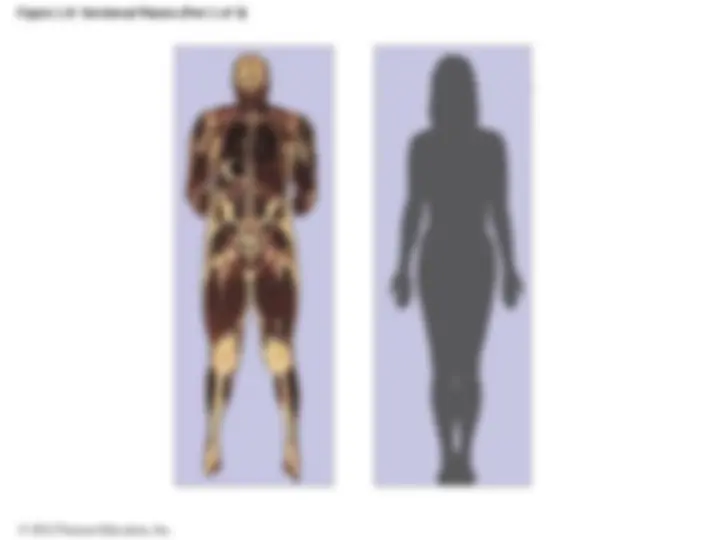Download Introduction to Anatomy and Physiology - Lecture Slides | BIOL 230 and more Study notes Physiology in PDF only on Docsity!
Introduction to
Anatomy and
Physiology
Russell P. Nolan, M.S.Ed.
Baton Rouge Community College
- (^) Learning Outcomes
- (^) 1-1 and 1-3 Explain the importance of studying anatomy and
physiology. Define anatomy and physiology, describe the origins of
anatomical and physiological terms, and explain the significance of
Terminologia Anatomica ( International Anatomical Terminology ).
- (^) 1-4 Explain the relationship between anatomy and
physiology, and describe various specialties of each discipline.
- (^) 1-5 Identify the major levels of organization in organisms, from the
simplest to the most complex, and identify major components of
each organ system.
- (^) 1-6 and 1-7 Explain the concept of homeostasis and the role of
negative and positive feedback in maintaining homeostasis.
- (^) 1-8 Use anatomical terms to describe body sections, body regions,
and relative positions.
- (^) 1-9 Identify the major body cavities and their subdivisions, and
describe the functions of each.
1-1Applications of A and P
- (^) Anatomy is the oldest medical science
- (^) If you have the money
1-3 Form Determines Function
- (^) Anatomical terminology
- (^) Root, prefix, suffix
- (^) See back cover of your textbook
- (^) International Anatomical Terminology
- (^) Practice
- (^) Anatomy
- (^) Physiology
- (^) Gastrointeritis
- (^) Hepatic encephalopathy
- (^) Tachycardia
- (^) Homeostasis
1-4 What is Anatomy?
- (^) Anatomy
- (^) Macroscopic (gross) Anatomy
- (^) Surface anatomy
- (^) Regional anatomy
- (^) Systemic anatomy
- (^) Developmental anatomy
- (^) Clinical anatomy
- (^) Microscopic Anatomy
- (^) Cytology
- (^) Histology
1-4 What is Physiology?
- (^) Physiology
- (^) Cell physiology
- (^) Organ physiology
- (^) Systemic physiology
- (^) Pathological physiology
- (^) What questions are asked in an initial medical evaluation?
1-5 Organ Systems
- (^) Organs and Organ Systems Assignment
- (^) Pair up and I will give you 1 or 2 organs
- (^) Identify the organ, the organ’s functions, and the organ
system it belongs to
- (^) I will call you up to place your organ in the correct area
of the body
- (^) You will also need to identify the organ, function, and
organ system of the organs that are numbered in the
body
- (^) Turn in 1 sheet per group to me
Figure 1-1 Levels of Organization (Part 5 of 6)
The Organ Systems
Major Organs
- Bones
- Cartilages
- Associated ligaments
- Bone marrow
Skeletal Muscular Nervous Endocrine Cardiovascular
Major Organs
- Skin
- Hair
- Sweat glands
- Nails Major Organs
- Skeletal muscles and associated tendons Major Organs - Pituitary gland - Thyroid gland - Pancreas - Adrenal glands - Gonads - Endocrine tissues in other systems Major Organs
- Brain
- Spinal cord
- Peripheral nerves
- Sense organs Functions
- Protects support and protection for other tissues
- Stores calcium and other minerals
- Forms blood cells Functions
- Provides movement
- Provides protection and support for other tissues
- Generates heat that maintains body temperature Functions
- Directs immediate responses to stimuli
- Coordinates or moderates activities of other organ systems
- Provides and interprets sensory information about external conditions Functions
- Directs long-term changes in the activities of other organ systems
- Adjusts metabolic activity and energy use by the body
- Controls many structural and functional changes during development Functions
- Protects against environmental hazards
- Helps regulate body temperature
- Provides sensory information Major Organs
- Heart
- Blood
- Blood vessels Functions
- Distributes blood cells, water and dissolved materials including nutrients, waste products, oxygen, and carbon dioxide
- Distributes heat and assists in control of body temperature
Integumentary
1-9 Body Cavities
- (^) Body Cavities
- (^) Internal divisions of the body, contain the viscera
- (^) May relate to a region in the body or an actual chamber
enclosed by a watery serous membrane
- (^) Dorsal body cavity
- (^) Cranium and spinal cord
- (^) Ventral
- (^) Thoracic
- (^) Pleural and Pericardial (chambers)
- (^) Abdominopelvic (abdominal and pelvic)
1-9 Serous Membranes
- (^) Serous Membranes
- (^) Double layered membrane
- (^) Parietal layer – lines the body wall
- (^) Visceral layer – covers the internal organs
- (^) Two layers are usually in very close contact
- (^) Between the layers is serous fluid
- (^) Coats and moistens opposing surfaces
- (^) Reduces friction between moving internal organs
- (^) Pleuritis, pericarditis, peritonitis
Figure 1-9 Relationships among the Subdivisions of the Ventral Body Cavity (Part 1 of 2)
- Provides protection
- Allows organ movement
- Linings prevent friction Ventral Body Cavity Thoracic Cavity
Surrounded by chest wall and
diaphragm
Surrounds right lung Contains the
trachea, esophagus,
and major vessels
Right Pleural Cavity^ Mediastinum
Surrounds left lung
Subdivides during development into
Surrounds heart
Pericardial Cavity Left Pleural Cavity
Figure 1-9 Relationships among the Subdivisions of the Ventral Body Cavity (Part 2 of 2)
- Provides protection
- Allows organ movement
- Linings prevent friction Ventral Body Cavity
Subdivides during development into
Peritoneal Cavity
Contains many
digestive glands
and organs
Abdominal Cavity Abdominopelvic Cavity
Extends
throughout
abdominal cavity
and into superior
portion of pelvic
cavity
Pelvic Cavity
Contains urinary
bladder,
reproductive
organs, last
portion of
digestive tract
Figure 1-10a The Ventral Body Cavity and Its Subdivisions
POSTERIOR ANTERIOR
Pleural cavity Pericardial cavity Thoracic cavity Peritoneal cavity Abdominal cavity Pelvic cavity A lateral view showing the ventral body cavity, which is divided by the muscular diaphragm into a superior thoracic (chest) cavity and an inferior abdominopelvic cavity. Three of the four adult body cavities are shown and outlined in red; only one of the two pleural cavities can be shown in a sagittal section. Diaphragm Abdominopelvic cavity
Figure 1-10b The Ventral Body Cavity and Its Subdivisions
Visceral pericardium Pericardial cavity Parietal pericardium Heart (^) Air space Balloon The heart projects into the pericardial cavity like a fist pushed into a balloon. The attachment site, corresponding to the wrist of the hand, lies at the connection between the heart and major blood vessels. The width of the pericardial cavity is exaggerated here; normally the visceral and parietal layers are separated only by a thin layer of pericardial fluid.

